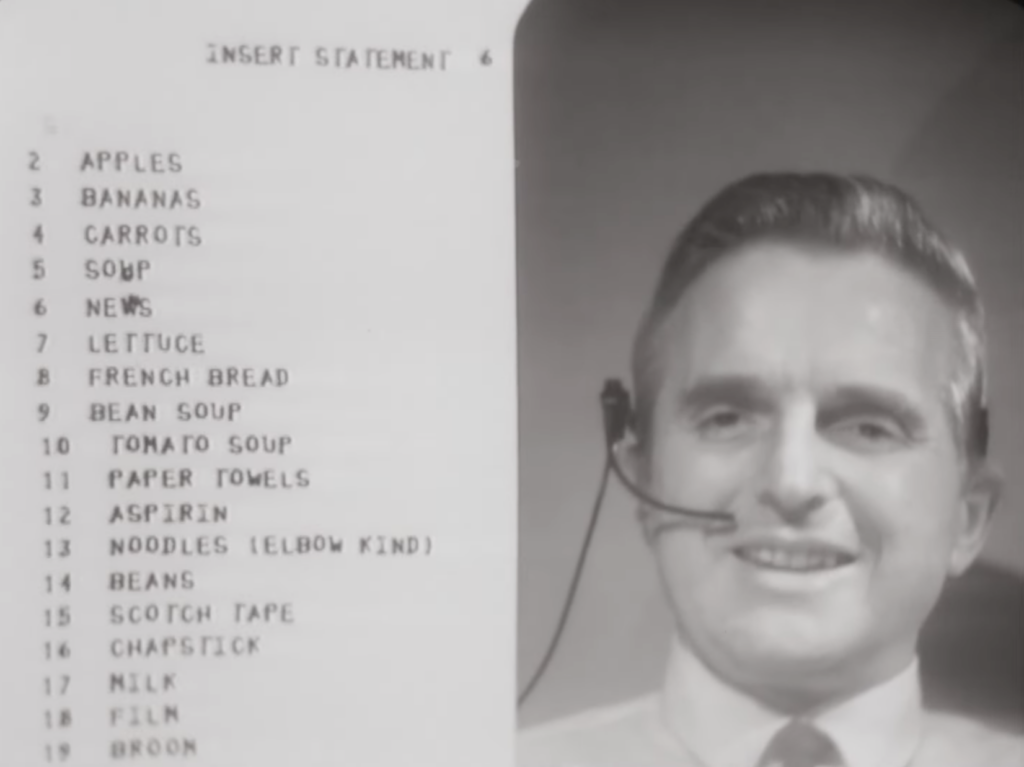
From left to right: Three control devices (a special keyset, a standard keyboard, and a mouse). Photo credits: The Doug Engelbart Institute.
This semester, I’m taking COS 436: Human-Computer Interaction, taught by Professor Andrés Monroy-Hernández and Professor Parastoo Abtahi. The course explores foundational theories and current research in the field of Human-Computer Interaction (HCI), focusing on interactive and social computing across diverse domains like artificial intelligence, augmented and virtual reality (AR/VR), accessibility, information visualization, and human-robot interaction.
As the semester comes to a close, I reflect on how the readings shaped my understanding of HCI and technology more broadly. I found that the readings move beyond just the HCI classroom, offering profound insights on how technology shapes our lives and the importance of design considerations in emerging technologies. Given their value for even those who have no background in computer science, here are three readings I found particularly exciting.
1. The Mother of All Demos – Douglas Engelbart, ACM Fall Joint Computer Conference 1968
The Mother of All Demos stands as a pivotal moment in computing history. Douglas Engelbart’s demo showcased groundbreaking technologies that are now all fundamental to our interaction with computers; more specifically, Engelbart presents the oN-Line System (more commonly referred to as “NLS”), a collaborative computer system including inventions such as the computer mouse, graphical user interfaces (GUI), video conferencing, and collaborative real-time document editing.
Engelbart’s call for technologists to recognize the potential for technology to augment human intellect has left a lasting impact, evident in modern tools like Zoom and Google Docs. In addition to contributing to these inventions, Engelbart emphasizes the importance of using these novel technologies to augment, not replace, intelligence. I’ve found this discussion to have resurfaced with new technologies. Perhaps most recently, technologists and policymakers have debated how we should learn to use and leverage generative AI in education. Though this demo is from the 1960s, this idea of using technology to enhance our knowledge still stands today, and I think it encourages us to push forward in the direction of innovation while actively considering how these new technologies are to be used.

Douglas Engelbart, an inventor and pioneer of the early computer and Internet, demonstrating the NLS. Photo credits: The Doug Engelbart Institute.
2. Beyond Being There – Jim Hollan and Scott Stornetta, CHI 1992
This paper explores how technology influences our sense of being present with others, emphasizing that the richness of communication extends beyond physical co-location. The authors encourage us to consider how design can bridge the gap between physical and technologically mediated experiences. While many current technologies simply attempt to imitate a sense of “being there” with others through video or audio channels, Hollan and Stornetta suggest that technologies are only the most effective and successful when they become adopted even as people are co-located.
When reading this paper, I immediately thought of TranscribeGlass (a new AR device that projects real-time captions) and how it can make in-person interactions more accessible by augmenting the information we have access to. For developers, understanding Hollan and Stornetta’s key argument is crucial for recognizing how new technologies will impact the way we communicate with one another, allowing us to adopt new usage behaviors or be mindful of potential limitations and downsides. More broadly, I think that in this increasingly digital world, looking for more opportunities to creatively use technology to improve our person-to-person and mediated conversations can help us create more meaningful interactions than we would have without technology.

Founder Tom Pritsky demonstrating how TranscribeGlass provides real-time captions. Photo credits: Screenshot taken by Alexis Wu (2023) from Generative AI.
3. Turkopticon: Interrupting Worker Invisibility in Amazon Mechanical Turk – Lilly C. Irani and M. Six Silberman, CHI 2013
The rise of gig work (defined here as temporary, flexible jobs characterized by a low barrier to entry and often completed by freelancers) has sparked discussions on the labor dynamics, particularly with “humans-as-a-service” platforms. In their paper, Irani and Silberman study gig work through Amazon Mechanical Turk (MTurk), a platform for employers to find human workers to complete large volumes of microtasks that cannot be fully automated. A key contribution of the paper is how it highlights the power imbalance between MTurk employers and workers. Despite the essential role of MTurk workers in the success of these employers’ companies, the ability of employers to withhold payment post-task completion has sometimes resulted in worker exploitation.
In response, the authors present Turkopticon, a web browser extension designed for workers to publicize their experiences with MTurk employers. By creating a platform for MTurk employees to rate and review their employers on their reliability, fairness, and payment practices, the authors aim to foster more equitable employer practices and help employees make more informed decisions about which tasks to accept. The article encourages a critical examination of ethical considerations in design, urging for a proactive commitment to transparency and accountability to safeguard the well-being and fair treatment of gig workers.
(For more discussion on gig work in other recent technologies, I’d recommend reading this article from one of my other classes, COS 350: Ethics of Computing.)
Diving into Engelbart’s Mother of All Demos, Hollan and Stornetta’s discussion of technologies that mediate interpersonal interactions, and Irani and Silberman’s insights into gig work has served as a great introduction to the kinds of discussions and goals of the HCI community. These texts aren’t just about technology; they’re about shaping our world. They’ve left me thinking about the impact of our design choices on our digital and human landscapes, which is a discussion that should involve far more than just computer scientists. If you’re interested in learning more, I would highly recommend taking COS436 when it’s offered again in a later semester!
— Alexis Wu, Engineering Correspondent

